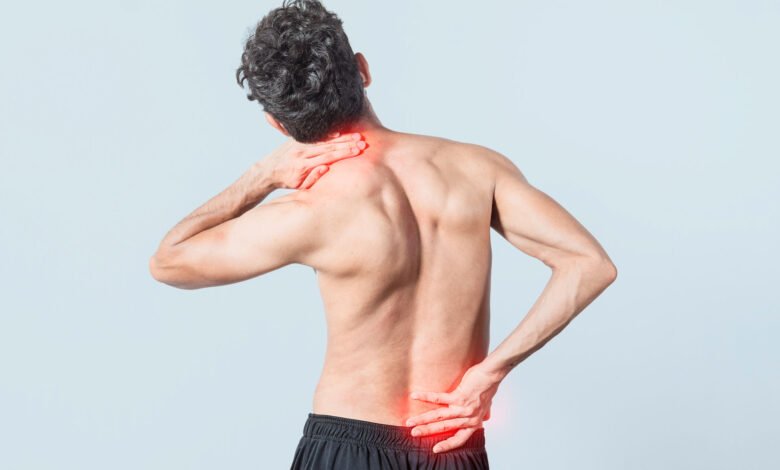
An universal human experience, pain can take many different forms and range in intensity. Acute or chronic pain has a major influence on day-to-day functioning and both physical and mental health. Out of all the pain management techniques available, exercise stands out as a potent and comprehensive intervention. We examine the complex relationship between exercise and pain management in this extensive guide, covering the advantages of treatment, symptom relief, and underlying mechanisms of its efficacy.
I. Comprehending Pain and Its Diverse Expressions:
Understanding the variety of pain is crucial before discussing the function of exercise. A customized approach is necessary for the efficient therapy of both nociceptive and neuropathic pain, which can be classified as acute or chronic. Usually the result of an injury or disease, acute pain alerts the body to its defenses. On the other hand, chronic pain lasts for a long time and frequently develops into a separate illness.
Pain can cause anything from minor discomfort to major problems that affect movement, emotions, and general quality of life. Determining the particular symptoms linked to various forms of pain establishes the basis for focused treatments.
II. Using Exercise as a Form of Therapy:
a. The Working Mechanism:
The potential of exercise to modify physiological mechanisms that impact pain perception and resilience underpins its role in pain management. Physical activity causes the body’s natural analgesics, endorphins, to be released, which improves mood and lessens pain perception. Exercise on a regular basis also improves circulation, which helps tissues receive oxygen and nutrients that speed up the healing process.
b. Various Exercises for Pain Reduction:
- Aerobic Exercise: Exercises like cycling, swimming, and walking strengthen the heart, increase stamina, and lessen pain all around.
- Strength Training: Increasing muscle flexibility and strength through resistance training helps to support joints and reduce discomfort related to musculoskeletal disorders.
iii. Stretching and Flexibility: Including exercises such as Pilates or yoga improves range of motion and reduces stiffness, which are important for pain management.
- Low-Impact workouts: Water aerobics and elliptical training are examples of low-impact workouts that reduce joint stress and encourage movement for those with disorders like osteoarthritis.
III. Reducing Symptoms of Pain with Exercise:
A Focused Strategy for Particular Situations:
- Back pain: By supporting the spine and lowering disc pressure, core-strengthening exercises and flexibility regimens can help.
- Arthritis: Mild, low-impact activities improve flexibility, keep joints from becoming stiff, and help to preserve joint function.
iii. Headaches and Migraines: By enhancing blood flow and lowering stress, regular aerobic exercise has been demonstrated to lessen the frequency and severity of migraines.
- Fibromyalgia: Aerobic, strength, and flexibility activities work well together to help control symptoms and enhance general health.
- Effect on the Mind:
Exercise is essential for controlling the psychological effects of pain in addition to its physiological advantages. Chronic pain frequently coexists with conditions like depression and anxiety, and research shows that exercise helps reduce these comorbidities. Mood enhancement, stress reduction, and better sleep quality all have a good effect on one’s sense of overall well being.
IV. The Fundamental Causes of Exercise’s Beneficial Effects:
Neurological Adjustments:
Frequent exercise promotes anatomical and functional changes in the brain by causing neuroplasticity. Changes in pain processing areas might result in both heightened pain tolerance and reduced sensitivity.
- Effects on Inflammation:
Inflammation is frequently linked to chronic pain. Exercise has been demonstrated to have anti-inflammatory properties by lowering pro-inflammatory cytokine levels and fostering a healing environment.
- Enhanced Muscle and Joint Performance:
Gaining muscle strength in the vicinity of injured joints adds stability and reduces strain. This is especially important for diseases like rheumatoid arthritis and osteoarthritis.
V. Including Exercise in a Thorough Pain Management Strategy:
Exercise is a powerful tool for managing pain, but it must be incorporated within a holistic strategy. Working together with medical specialists such as doctors, physical therapists, and pain managers guarantees a customized workout program that takes into account each patient’s demands and medical concerns.
In summary:
Finally, exercise is shown to be a versatile and successful pain management approach. People can use exercise to improve their general well-being by being aware of its therapeutic effects, ability to relieve symptoms, and underlying mechanisms of action. Exercise has the potential to change lives and offer relief from a variety of pain issues, therefore it is crucial to approach it as a complimentary part of an all-encompassing pain management plan.



